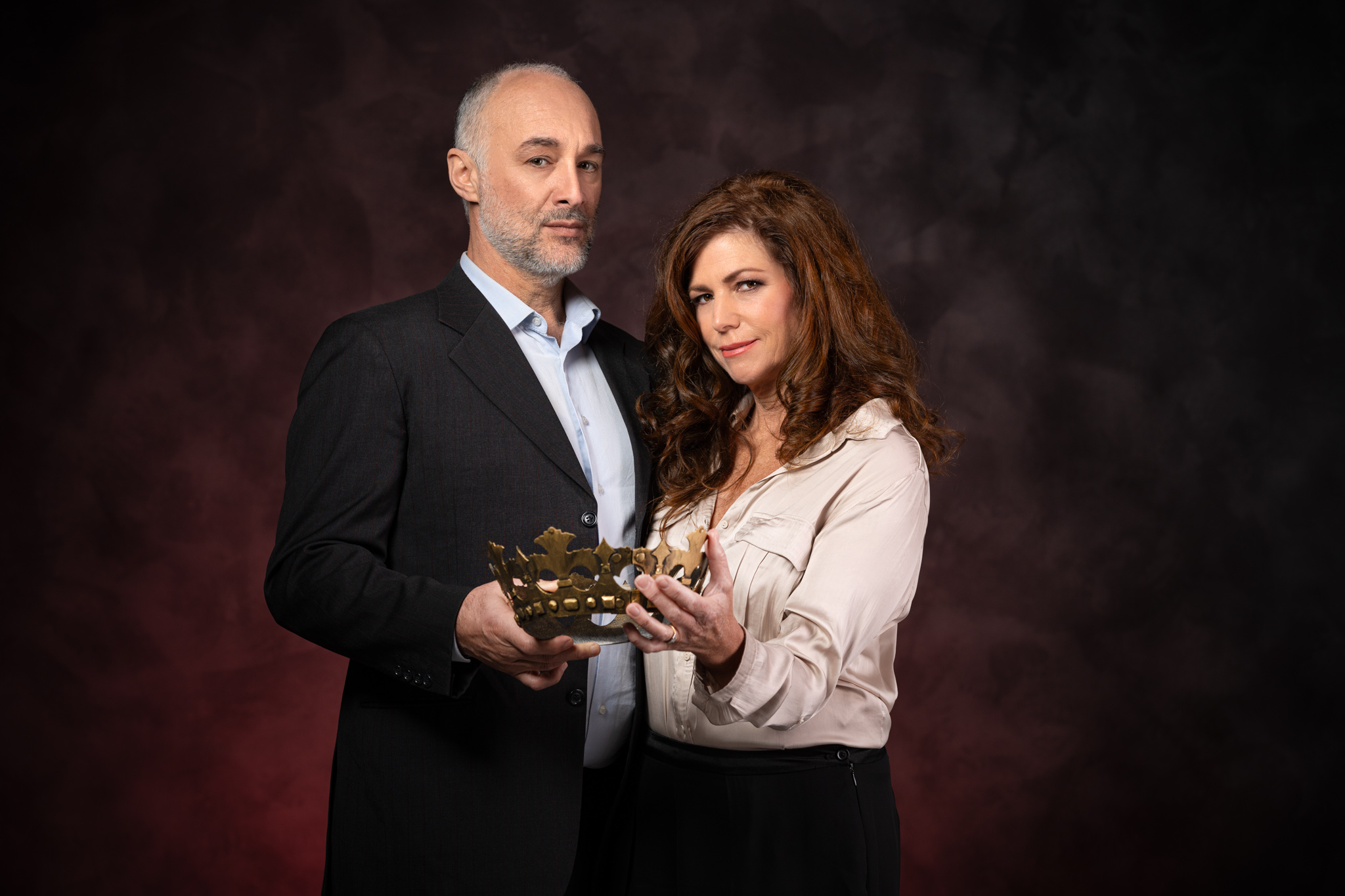Portrayals of masculinity and patriarchy in the works of Verdi and Gerwig.
Macbeth and Barbie.
There’s no way we could possibly connect our opera Verdi’s Macbeth to this year’s blockbuster hit movie Barbie, right? Just when we thought we couldn’t, it came to us like a 1950s inspired dream ballet dance sequence.
At the centre of the stories of Macbeth and Barbie are a famous fictitious couple – respectively Macbeth & Lady Macbeth and Barbie & Ken. Though we won’t be drawing parallels between Lady Macbeth and Barbie (even that’s a tad too far for us!), we got to thinking about Macbeth and Ken.
Macbeth – nobleman, warrior, general – has his destiny turned on its head when he receives the witches’ prophecy. He is confident, brave and deeply in love with his wife, but gently simmering underneath is a desire for power. His wife, Lady Macbeth, upon hearing about the prophecy urges him to take up the challenge, questioning his courage to achieve his destiny. She plays her role with a deft hand, her eye on the prize and Macbeth the pawn with which she will achieve it.
Ken on the other hand has two motivations – Barbie and beach. The latter aside, his purpose in life is Barbie. His destiny is unrequited love and to be the “& Ken” of the famous duo. He is insecure and full of anxiety, only at ease when Barbie is giving him her full attention. When Barbie has an existential crisis and diverts down a path to an alternative destiny manifested by the human Gloria (uh, hello witches?), Ken is prompted to follow the lead of his other half and he too has his destiny altered.
In their stories, both men are guided down their paths by their respective women, and both men have their gender roles questioned and challenged (either deliberately or inadvertently) by these same women. As a result, they are compelled to define what their masculinity is. Lady Macbeth questions if Macbeth has the courage to fulfil his destiny, and Ken inadvertently discovers patriarchy… and horses (just be thankful “my kingdom for a horse” is from another Shakespearean tyrant’s story!). For Macbeth this means committing heinous crimes and treachery, and for Ken it is finding his inner misogynist and turning Barbieland into his own Kendom.
But for both men, it is his significant other who can ease or confuse his behaviour. Whether deliberate, as in the case of Lady Macbeth, or not so for Barbie, the strong female lead has the ability to influence and manipulate or ease and placate the mind of her man, coaxing or soothing them to decisions and altering their paths to destiny along the way.
Lady Macbeth plays Macbeth like a puppet. He is manipulated, coerced, used, and ultimately left genuflecting at the feet of the woman he loves, begging for love and recognition. Ken, a doll designed to be played with much like the puppet Macbeth, also finds himself in this predicament at the arc of his story, begging Barbie for love and recognition and for her to help him fulfil his purpose and be the man he is supposed to be.
These traits of feeling used, not having a purpose, wanting recognition and love from their significant other, leave these men shells of who they are meant to be. The toxic masculinity soon takes hold, leading to their ultimate endings. Granted one scenario depicts a pink Malibu beach invasion full of plastic toys and multi-coloured flesh baring outfits and the other takes place on the gloomy Scottish moors amongst bloodshed, brutality and terror… but the similarities are there.
In each case, it is a reflection that historically men have resolved their conflicts with war and violence, the darker side of machoism and ego prevailing against logic and reason.
What about their arias? Macbeth sings his redemption song, ‘Pietà, rispetto, amore’ (‘Compassion, honour, love’). Just the title gives you an idea that he is seeking solace, redemption and meaning in his actions. It is full of regret and sadness at his irredeemable past and a destiny unfulfilled.
In ‘I’m Just Ken’, our plastic hero laments his true love not returning his feelings, and fears of a life of “blond fragility” where his destiny too is not fulfilled.
It is in these moments that Macbeth and Ken emerge from behind the fog created by their women to lay bare their feelings for the audience. Macbeth creates an emotional core to his story. Unsuspecting in his wife’s questioning of his masculinity, his aria shows him to be a wreck of a man who only ever wanted the love of his wife. Likewise, a shattered Ken creates an unexpected emotional centre through the simple desire of just wanting the love of Barbie.
Though Ken survives his ordeal and comes out the other side (hopefully) a changed man thanks to Barbie’s platonic love and support, Macbeth succumbs to his destiny, a victim of his manipulative wife and her bloodthirsty desires.
You’ve beared with us so far but let us offer one last thought. How can Macbeth and Barbie teach us about the world we live in? There have been many studies on gender roles and the character dynamics in Macbeth, and there is bound to be many a thesis of the same based on Barbie, but our conclusion is simple. Gender roles will continue to change and be challenged in society and be controversially discussed via the medium of popular culture, but it is the power these mediums have in holding up a mirror to society to commentate on issues such as coercive relationships, toxic masculinity, gender imbalance, and even tyrannical power, that make them powerful.
So whether you’re in the cinema or at the theatre, we hope that you sit back and enjoy the story you are being told, but that you also reflect on the messages and questions being posed to you. We also hope that you come away with one lesson learnt – that you are Mac-nificent and you are Ken-ough.



